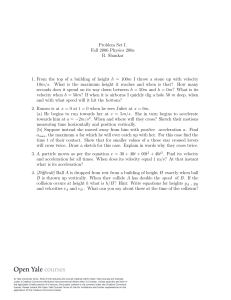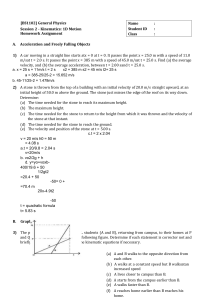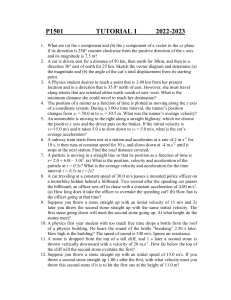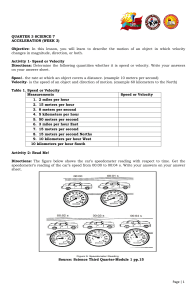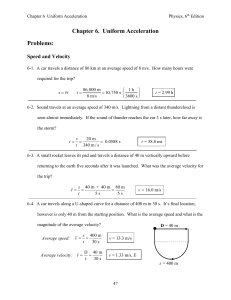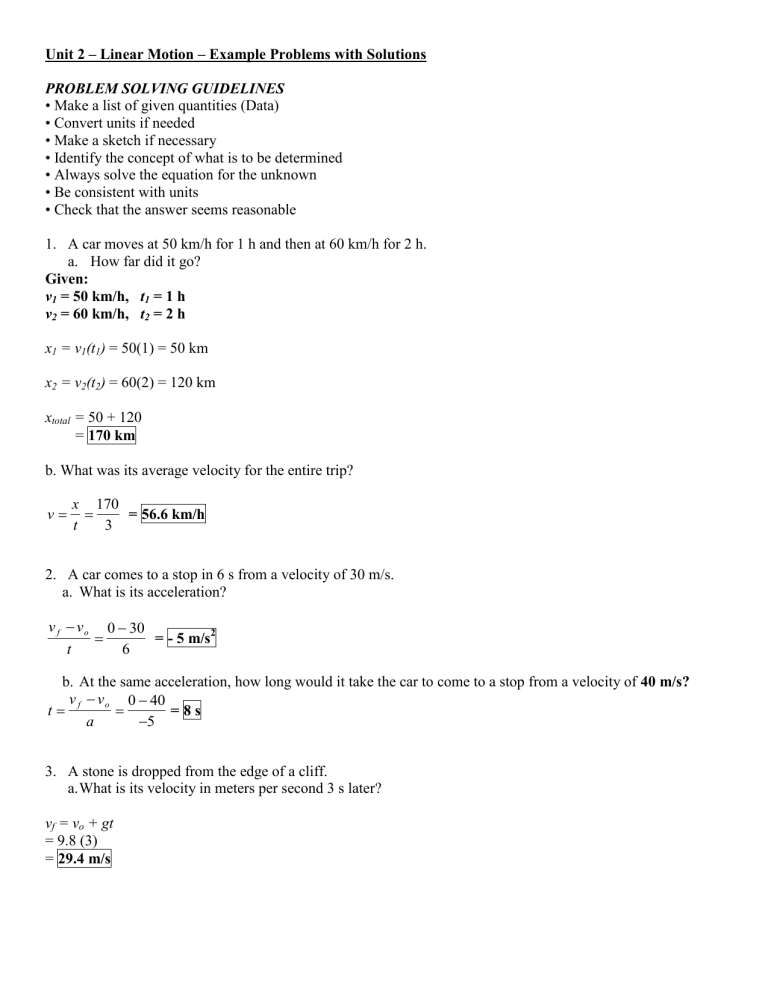
Unit 2 – Linear Motion – Example Problems with Solutions PROBLEM SOLVING GUIDELINES • Make a list of given quantities (Data) • Convert units if needed • Make a sketch if necessary • Identify the concept of what is to be determined • Always solve the equation for the unknown • Be consistent with units • Check that the answer seems reasonable 1. A car moves at 50 km/h for 1 h and then at 60 km/h for 2 h. a. How far did it go? Given: v1 = 50 km/h, t1 = 1 h v2 = 60 km/h, t2 = 2 h x1 = v1(t1) = 50(1) = 50 km x2 = v2(t2) = 60(2) = 120 km xtotal = 50 + 120 = 170 km b. What was its average velocity for the entire trip? v x 170 = 56.6 km/h t 3 2. A car comes to a stop in 6 s from a velocity of 30 m/s. a. What is its acceleration? v f v o 0 30 = - 5 m/s2 t 6 b. At the same acceleration, how long would it take the car to come to a stop from a velocity of 40 m/s? v f v o 0 40 t =8s a 5 3. A stone is dropped from the edge of a cliff. a. What is its velocity in meters per second 3 s later? vf = vo + gt = 9.8 (3) = 29.4 m/s b. How far does it fall in this time? x = vot + ½ gt2 = ½ (9.8)(3)2 = 44.1 m 4. Find the acceleration of a car that comes to a stop from a velocity of 60 m/s in a distance of 360 m. v f 2 v o 2 2ax v f 2 v o2 - 5 m/s2 2x




